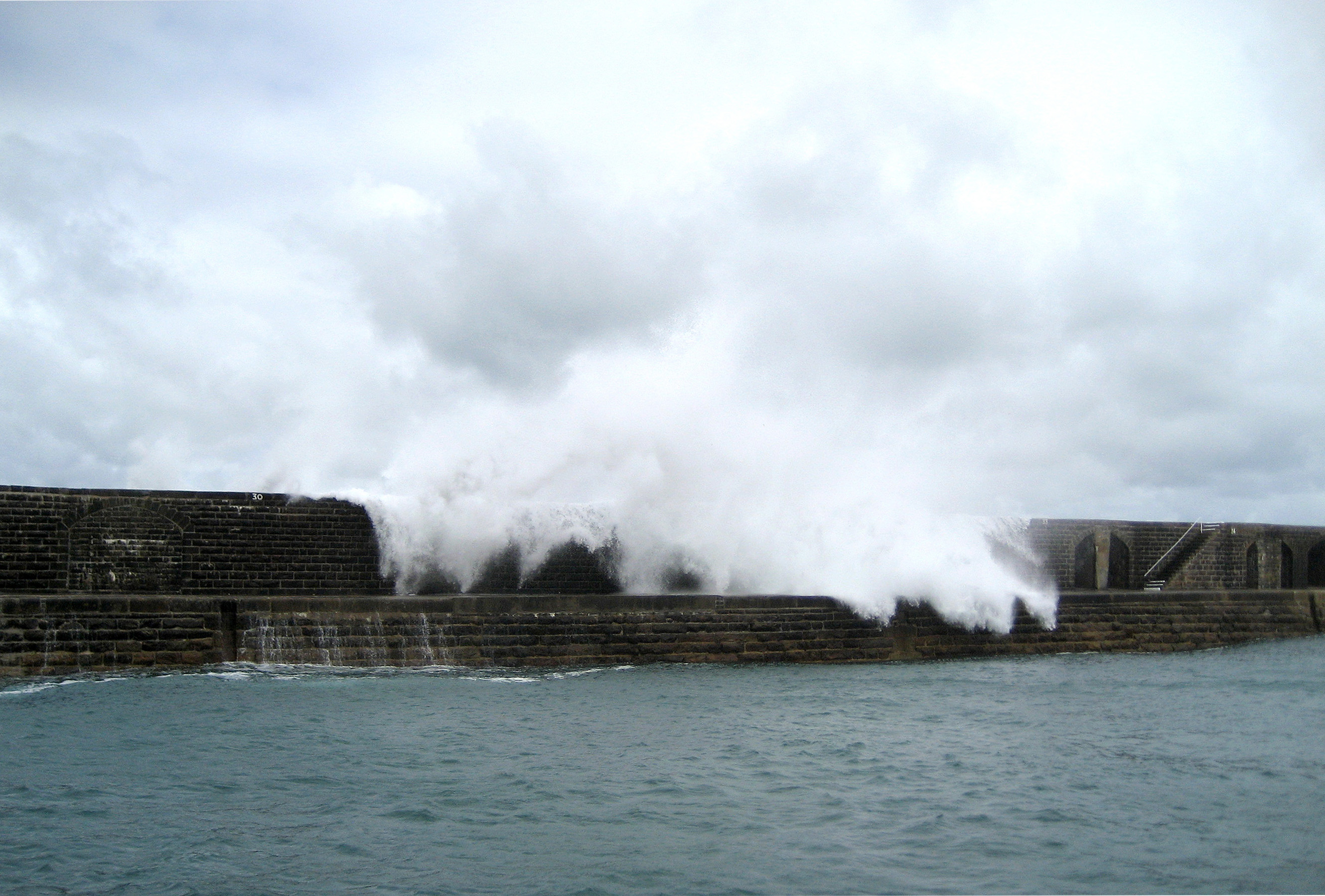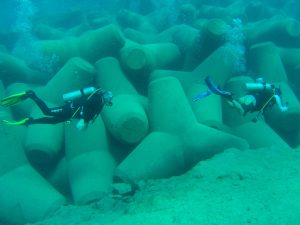
How to Approach Breakwater Maintenance as Water Levels Rise
Published on June 15, 2020Many marinas are protected by rubble mound or sheetpile breakwaters, some of which are approaching the end of their life cycles. Regular monitoring and maintenance are paramount if the performance levels of these breakwaters are to be preserved. This is particularly important for marinas facing sea level rise, along with the more severe storms caused by global warming. As water levels rise, wave overtopping of the breakwater will increase, resulting in agitation in the marina basin that can damage the infrastructure and vessels moored within. Larger storm waves can also accelerate breakwater deterioration and potentially lead to structural failure.
When water levels pass a certain height, the breakwater will become ineffective and no longer safeguard the vessels and infrastructure it was originally built to protect. Adopting an appropriate strategy to monitor breakwater facilities allows a marina owner/operator to make informed decisions on how to maintain the desired protection and performance level in the most cost-effective manner possible.
Baseline Conditions
The first step is having a clear understanding of the conditions for which the breakwater structure was designed. Most existing breakwaters were designed in response to historic averages known at that time for a particular geographic region. What were the known historic high and low water levels and tidal dynamics that informed the design? How did the design account for extreme wave and storm events and their potential impact on structural stability and overtopping? What storm severities/frequencies were assumed?
While there isn’t always specific documentation available to help a marina owner answer these questions, particularly if a facility is very old, in many cases there are relevant examples of similar breakwaters that were built around the same time using similar specifications and materials. Even knowing the typical performance assumptions for a comparable breakwater cross-section can be extremely helpful in evaluating how performance is likely to change as water levels rise and storms intensify.
The next step is to perform a thorough inspection and conditions assessment both above and below the water line. Determining the current service level and condition of all breakwater structures within a harbor system is essential to identify and prioritize maintenance needs moving forward. The destructive consequences of waves, tides and fluvial action on marina breakwaters can be readily observed through changes in the profile shape of the structures, scouring at the toe, settlement and deterioration of rubble mound breakwaters as stones are displaced or fractured. In addition to identifying immediate need repairs, the initial inspection provides a critical baseline to reassess breakwater performance and stability in the future, especially after major wave/storm events.
Ongoing Monitoring
Establishing an ongoing monitoring program is also essential to identify whether a breakwater’s condition and performance are stable, improving or deteriorating over time. This monitoring also needs to account for changes in the baseline environmental conditions that the structures are subjected to, such as water level, wave climate, river flows and sediment transport. Rising water levels also impact shoreline erosion and sediment levels along breakwaters and harbor entrances, so it is helpful to monitor how those conditions are changing as well.

Even though it may seem obvious to conclude that a particular storm caused a specific problem or failure, the monitoring data will provide the information needed to more accurately determine how the breakwater structure and the marina sustained damage. For example, SmithGroup engineers have seen cases where a facility was damaged by a combination of strong waves and landside flooding triggered by an extreme precipitation event. Understanding how damage can stem from multiple factors allows a marina owner/operator’s risks to be better identified and mitigated moving forward.
Appropriate Action
Based on the outcome of the initial conditions assessment, the marina owner and engineer can decide on the best course of action for repairs or upgrades. If current problems are minor or non-existent, then no action is needed other than the periodic inspections.
Partial rehabilitation and preventative maintenance can be performed at identified weak spots in a breakwater to achieve maximum results with minimum intervention and cost. The engineer must be creative to find the most cost-effective way to reuse the existing infrastructure and materials for improvements. Even small adjustments to an inefficient breakwater can increase its resiliency. In the case of a rubble mound breakwater, dislodged armor stones can often be reused, placing them back into the structure and ensuring good interlocking to reduce further damage.
If the breakwater’s stone size is not large enough to withstand the impacts of rising water levels and more severe storms, it can potentially serve as a base for a new layer of armor stone to be placed on top. Another alternative to adapt an existing breakwater is to add a capping wall or a concrete caisson to increase its height and reduce overtopping.
For structures that have reached the end of their design life, or structures that are no longer performing effectively, reconstruction or replacement will be needed. Realistically, very few owners can afford to completely rebuild their facilities to eliminate all risks associated with future sea level rise and extreme events. Therefore, the engineer and the marina owner need to agree on what level of risk is acceptable and what the owner is willing to invest to maintain acceptable performance. In some cases, it might make more financial sense to develop a contingency plan for emergency repair.
The impacts of increased overtopping of a breakwater structure can sometimes be addressed by modifications within the harbor itself. The use of floating wave attenuators inside the basin, reconfiguration of the docks, and other lower-cost strategies can be used to mitigate a loss of tranquility caused by more frequent overtopping.
In cases when a complete re-design is needed, there is an opportunity to explore creative solutions that can enhance both future performance and revenue potential. The development and use of SmithGroup’s patented HX-block wave absorbing seawall for the Ayia Napa Marina in Cyprus provided the desired tranquility levels within the marina basin, while eliminating the large footprint required for rubble mound structures; this approach significantly increased the usable (and marketable) space inside the marina basin. Another benefit of these kind of wave absorbing structures is that they can provide habitat for aquatic fauna.
Phased implementation can also be considered to help with budget concerns. Given the difficulty of predicting the exact magnitude of future sea level rise, building flexibility and adaptability into a breakwater structure can be a very effective response.
Sea Level Rise Effects
The use of offshore, submerged breakwaters and reefs to reduce incoming wave impacts is becoming more problematic in areas predicted to experience ongoing sea level rise. Given the costs associated with building these structures, it is critical they be designed with a clear understanding of how water level changes will diminish their performance and lifespan over a much shorter timeframe than has been the case historically.
Each marina faces its own unique challenges maintaining breakwater performance in response to rising water levels. The risks and costs can vary widely depending on location, entrance and dock orientation, and available materials. Conditions assessment and ongoing monitoring can play an invaluable role in proactively identifying and implementing the right breakwater solutions at the right time.
Alejandra Lira is a coastal engineer with SmithGroup. She can be contacted at alejandra.lira@smithgroup.com.
| Categories | |
| Tags |





